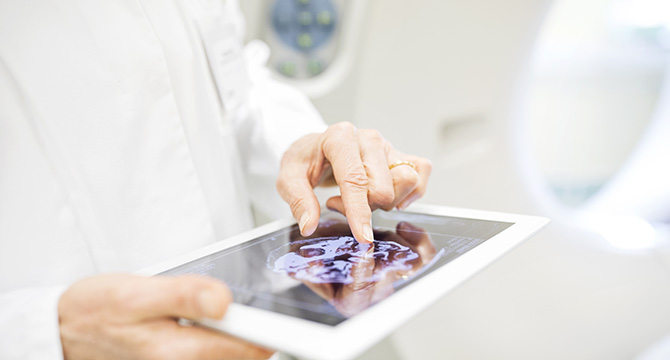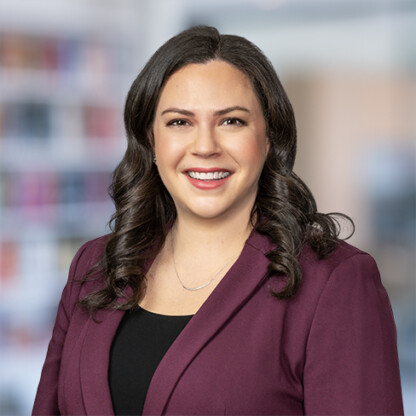Digital Health Care Investors Summit Highlights Digital Health Expansion

In early December, leading experts in digital health and telemedicine came together at the Digital Health Care Investors Summit hosted by Foley & Lardner LLP and Deloitte. The Summit explored innovations in digital health care technology that help promote continuity of care and increase patient access to health care services.
The program began by discussing Foley’s 2017 Telemedicine and Digital Health Survey, which analyzed responses from more than 100 senior executives at hospitals, specialty clinics, ancillary services and related provider organizations. The responses demonstrated that the recent investments in digital health care has led to major a major uptick in the number of people utilizing telemedicine. For example, in Foley’s 2014 Inaugural Survey, 87% of respondents did not anticipate using telemedicine. And yet, only three years later, 76% of respondents now offer or plan to offer telemedicine services. Similarly, more than 80% of respondents said telemedicine services are spurring an expansion of their digital health programs.
Growth Opportunities for Remote Patient Monitoring
The Summit’s keynote speaker was Joseph H. Capper, President and CEO of BioTelemetry (NASDAQ:BEAT), a wireless medical technology company focused on the delivery of health information to improve human health. Mr. Capper shared BioTelemetry’s pathways to success in the digital health industry, particularly focusing on cutting-edge cardiac monitoring technology through a small device that automatically transmits data for remote patient monitoring.
Mr. Capper discussed the company’s recent acquisition of Lifewatch, a provider of remote diagnostic cardiac monitoring technologies and services, detailing how the deal accelerated BioTelemetry’s strategic plan to solidify its position in remote cardiac monitoring. In addition to creating value through consolidation of assets, the acquisition benefitted both companies by strengthening customer relationships and increasing revenue through enhanced efficiencies of scale. Mr. Capper noted his enthusiasm for digital health growth opportunities in the near future in areas of population health and diabetic remote patient monitoring.
“The next generation of disease management will collect clinically meaningful data and use codified care principles to enable individualized interventions and iterative learning.”
Joseph Capper, CEO of BioTelemetry
How Digital Health is Enhancing the Practice of Medicine
The Summit also included a panel discussion moderated by Jonathan D. Linkous, CEO of Linkous Health and former CEO of the American Telemedicine Association. The panel held a point-counterpoint on different perspectives on the future of digital health. Mr. Linkous was joined by Jennifer Joe, M.D., a practicing VA physician and CEO of MedTechBoston and Medstro.com, and Sarah Sossong, Senior Director at the Center for TeleHealth at Massachusetts General Hospital. The panelists discussed their experiences of how digital health is enhancing and changing the practice of medicine, including what physician specialties are currently best suited for telemedicine-based services. The speakers also discussed regulatory and legal challenges associated with multi-state and international telemedicine expansion, such as professional licensure, insurance coverage and reimbursement, practice standards, and FDA oversight of hardware and software as a medical device. Panelists observed that, while there are several federal bills pending in Congress that would significantly aid the growth of telemedicine and digital health by expanding Medicare coverage of these services, Congress has not yet voted to pass them into law.
Despite a current environment of regulatory complexity, the speakers offered a variety of ways that telemedicine is being used today. One example of the power of telemedicine is expanding access to specialty services for patients located in rural areas or urban areas with specialist shortages. Dr. Joe described how digital health is used at the Veterans Administration to reduce patient wait-time to secure an appointment to see a dermatologist. In Boston, she explained, the average wait-time for a patient to see a dermatologist is 3-6 months, but teledermatology arrangements help primary care providers connect patients with dermatologists “on demand” while in the primary care provider’s office. This technology can help improve overall access to dermatologist services and timely treatment of skin cancers, she noted.
Ms. Sossong opined how telemedicine is not limited to any specialty or modality, describing the wide variety of digital health services available to patients, such as video visits, online second opinions, and mobile applications. This technology, she said, has applications for use across virtually every medical specialty. Ms. Sossong shared how patients in the home can access healthcare providers via video visits, potentially helping patients avoid costly and time consuming visits to an urgent care center or emergency department, or simply reduce the worry of wondering if something is wrong. Ms. Sossong also shared how emergency medicine physicians in Boston are collaborating with physician colleagues at remote community hospitals across the country via telemedicine, facilitating remote guidance for selected patients. These arrangements have demonstrated the potential to allow patients avoid transfers to another hospital and remain in their local community.
Mr. Linkous remarked that telemedicine is helping health systems increase their market share. He explained that some large health systems are using telemedicine to provide e-consults and second opinions for patients who are physically present at smaller facilities. Not only does this help increase patient’s access to expert care in rural areas, he said, but it can serve as a brand awareness and destination medicine model for those consulting health systems.
Closing Remarks on the Future of Telemedicine and Digital Health
Telemedicine and digital health is rapidly evolving and continues to grow and explore new ways it can be incorporated into the health care industry. As these technologies continue to mature, new business models and approaches will develop to integrate into the practice of medicine. Until “telemedicine” becomes simply “medicine”, Ms. Sossong recommended developers and providers focus on the needs of patients while evaluating how new tools can help improve the quality, timeliness and accessibility of health care services.
For more information on telemedicine, telehealth, and virtual care innovations, including the team, publications, and other materials, visit Foley’s Telemedicine Practice.

